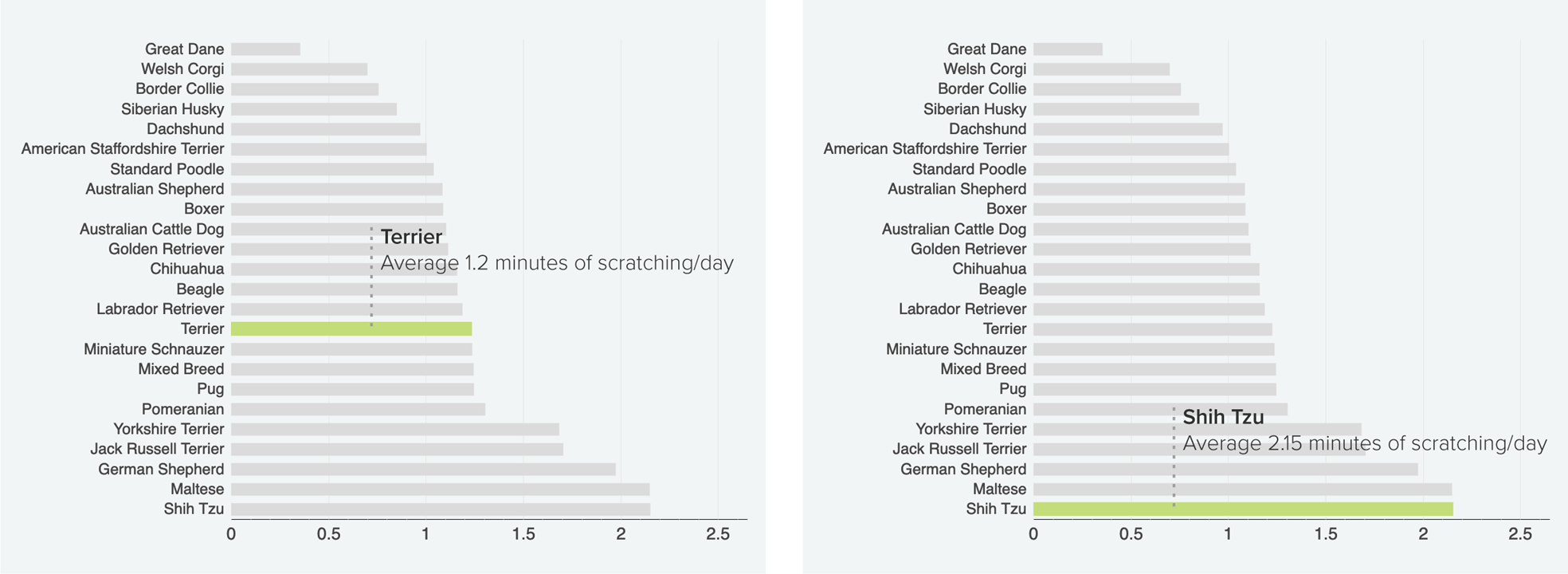
Welfare and Behaviour
Microbiome
Itchy pets: how to spot, prevent and treat pets’ skin allergies
Environmental and food allergies are the most common cause of skin conditions affecting cats and dogs worldwide. While the main symptom in most pets is itching, cats and dogs react differently to skin allergies. Dogs scratch and lick their skin, coat or paws to reduce itchiness, and cats usually overgroom; licking their skin to the point of redness and hair loss.
But because scratching, licking and grooming are normal behaviours, it can be difficult for pet owners to know when their cat is overgrooming or when a dog is scratching or licking more than usual. Too much scratching, licking or grooming can lead to skin infections - an all too common problem. In 2020, the largest veterinary practice network in the United states, Banfield Pet Hospital, saw a 58.7% year-on-year increase in pets diagnosed with skin issues.
How much scratching is too much?
To help pet owners make informed decisions about their pets’ skin health, veterinarians and data scientists across Mars Petcare developed an algorithm that can track a dog’s licking and scratching and establishes the normal range for these behaviours. Powered by Whistle health monitor, Pet Insight Project pairs up data from a dog’s medical records with behaviour data, uncovering health insights and enabling owners and veterinarians to make evidence-based decisions about their dog’s skin health. The team discovered that the average dog enrolled in the project and diagnosed with a dermatological issue showed 3 times as much daily scratching and 2-3 times as much licking as dogs with vet-verified healthy skin. They also found certain dog breeds are more likely to suffer from environmental allergies than others.

So, what happens when pets develop allergies? “An allergy occurs when the pet's immune system overreacts or is hypersensitive to foreign substances called allergens”, Dr. Tammy Hunter at VCA Hospital explains.
Environmental allergies
Pollen, mould, fleas, ticks, fleas and other skin parasitesare the main causes of seasonal allergies in pets. Some pets may be more affected in the warmer months, which can lead to seasonal scratching. If left untreated, the skin can become infected and might require antibiotic treatment.
Dr. Elizabeth Shines (Pet Insight Project) and Dr. Jennifer Welser (Mars Veterinary Health) share how owners can help prevent skin issues in their pets:
- Avoid areas where ticks are known to be present, if possible
- Use a product for external parasites such as fleas and ticks (suitable for the main problem parasites in your country/area) and speak to your vet if the issue continues
- Check your pet for external parasites such as fleas and ticks every day
- Depending on where you live or plan to travel, talk to your vet about the vaccines your pet might need
- Vacuum the house regularly and ask your veterinarian about using an environmental spray to tackle flea eggs and larvae in the home
- If you’ve found ticks, seek veterinary advice on the best way to remove them, and always wear gloves
- Always ask your veterinarian for advice on anything which is concerning you or your pet

Food allergies
“Food allergies are quite rare. We don’t know exactly how widespread they are, but it’s estimated 1-2% of dogs and less than 1% of cats are affected.”, says Mars Petcare’s Dr. Joanna Gale.
Unfortunately, pet owners can’t prevent food allergies - some pets are genetically predisposed to being allergic. The first signs usually appear in early adulthood: moderate to severe itching, rashes and spots, reddening of the skin, scabs, hair loss, and itchy and swollen ear canals. Such allergies can also cause digestive disorders such as vomiting or diarrhoea, or respiratory problems. The most common food allergens are protein sources: beef, wheat gluten, soy, chicken and dairy products. Pets that are allergic to one food type are more likely to be allergic to other foods, and suffer from environmental allergies as well.
“Food allergies are notoriously difficult to diagnose, because there is no definitive laboratory test”, Dr. Gale adds. To rule out any other types of allergies, veterinarians usually recommend feeding a specific (elimination) diet for around 12 weeks. “If symptoms disappear, owners need to gradually introduce the previously fed ingredients one at a time over the course of several weeks, to observe if allergy signs return.”
If you notice your pet is scratching a lot more than usual or if you spot skin lesions or hair loss, make sure to take your pet to the vet as soon as possible.
Read more about allergies in cats and dogs, seasonal scratching in dogs and how to protect your dog during tick season.





